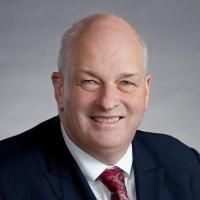1-Year Post-Operative Radiographic and Patient-Reported Outcomes following Cervical Deformity Correction are not Affected by a Short-Term Unplanned Return to the OR.
Date
2023-02
Journal Title
Journal ISSN
Volume Title
Repository Usage Stats
views
downloads
Citation Stats
Abstract
Study design
Retrospective analysis of a prospectively-collected multi-center database.Objective
Assess the radiographic and health-related quality of life (HRQoL) impact of a short term (<1 y) return to the OR after adult cervical spine deformity (ACSD) surgery.Summary of background data
Returns to the OR within a year of ACSD correction can be particularly devastating to these vulnerable hosts as they often involve compromise of the soft tissue envelope, neurologic deficits or hardware failure. This work sought to assess the impact of a short-term reoperation on 1-year radiographic and HRQoL outcomes.Methods
Patients operated on from 1/1/2013 to 1/1/2019 with at least 1-year of follow-up were included. The primary outcome was a short-term return to the OR. Variables of interest included patient demographics, Charlson Comorbidity Index (CCI), HRQoL measured with the Modified Japanese Orthopaedic Association (mJOA), Neck Disability Index (NDI) and EuroQuol-5D visual analogue scale (EQ-5D VAS) and radiographic outcomes, including T1-slope (TS), C2-C7 sagittal cobb angle (CL), TS-CL and cervical sagittal vertical axis (cSVA). Comparisons between those who did versus did not require a 1-year reoperation were performed using paired t-tests. A Kaplan Meier survival curve was used to estimate reoperation-free survival up to 2-years post-operatively.Results
A total of 121 patients were included in this work (age 61.9±10.1 y, BMI 28.4±6.9, CCI 1.0±1.4, 62.8% female). A 1-year unplanned return to the OR was required for 28 (23.1%) patients, of whom 19 followed-up for at least 1-year. Indications for a return to the OR were most commonly for neurologic complications (5%), infectious/wound complications (5.8%) and junctional failure (6.6%) No differences in demographics, comorbidities, pre-operative or 1-year post-operative HRQoL or radiographic outcomes were seen between operative groups.Conclusion
Reoperation <1 year after ACSD surgery did not influence 1-year radiographic outcomes or HRQoL.Type
Department
Description
Provenance
Subjects
Citation
Permalink
Published Version (Please cite this version)
Publication Info
Fourman, Mitchell S, Renaud Lafage, Christopher Ames, Justin S Smith, Peter G Passias, Christopher I Shaffrey, Gregory Mundis, Themistocles Protopsaltis, et al. (2023). 1-Year Post-Operative Radiographic and Patient-Reported Outcomes following Cervical Deformity Correction are not Affected by a Short-Term Unplanned Return to the OR. Spine, Publish Ahead of Print. 10.1097/brs.0000000000004614 Retrieved from https://hdl.handle.net/10161/27971.
This is constructed from limited available data and may be imprecise. To cite this article, please review & use the official citation provided by the journal.
Collections
Scholars@Duke

Peter Passias
Throughout my medical career, I have remained dedicated to improving my patients' quality of life. As a specialist in adult cervical and spinal deformity surgery, I understand the significant impact our interventions have on individuals suffering from debilitating pain and physical and mental health challenges. Spinal deformity surgery merges the complexities of spinal biomechanics with the needs of an aging population. My research focuses on spinal alignment, biomechanics, innovative surgical techniques, and health economics to ensure value-based care that enhances patient outcomes.

Christopher Ignatius Shaffrey
I have more than 25 years of experience treating patients of all ages with spinal disorders. I have had an interest in the management of spinal disorders since starting my medical education. I performed residencies in both orthopaedic surgery and neurosurgery to gain a comprehensive understanding of the entire range of spinal disorders. My goal has been to find innovative ways to manage the range of spinal conditions, straightforward to complex. I have a focus on managing patients with complex spinal disorders. My patient evaluation and management philosophy is to provide engaged, compassionate care that focuses on providing the simplest and least aggressive treatment option for a particular condition. In many cases, non-operative treatment options exist to improve a patient’s symptoms. I have been actively engaged in clinical research to find the best ways to manage spinal disorders in order to achieve better results with fewer complications.
Unless otherwise indicated, scholarly articles published by Duke faculty members are made available here with a CC-BY-NC (Creative Commons Attribution Non-Commercial) license, as enabled by the Duke Open Access Policy. If you wish to use the materials in ways not already permitted under CC-BY-NC, please consult the copyright owner. Other materials are made available here through the author’s grant of a non-exclusive license to make their work openly accessible.
